Pop Up Art
It is possible to create three-dimensional objects that can be folded together and become flat. There is an amazing variety of ideas out there. Here I am describing a technique that is used in these videos:Pop Up Birdcage
Cardboard Pop-Up Ornaments (the tower at 1:25)
In both cases the three-dimensional object is a tower-like object with hexagonal cross section. The trick is to fold the "walls" outwards and the floor down in half. Two out of the six walls (facing each other, marked A, A') are attached to the card (blue lines), and the same walls are attached to the ceiling (in red). The kink of the ceiling is located symmetrically inbetween these two walls. The fact that the cross section is hexagonal is important. This means that the kink joining the two freely moving walls (B and C) does not need to be straightened out completely upon unfolding.

The tower of this example has three floors and a lantern on top of them. Here you see all the parts that are visible from outside. They are cut from 80 g/sqm paper. The walls of the lowermost floor do not fit into a paper sheet and had to be composed from two parts.
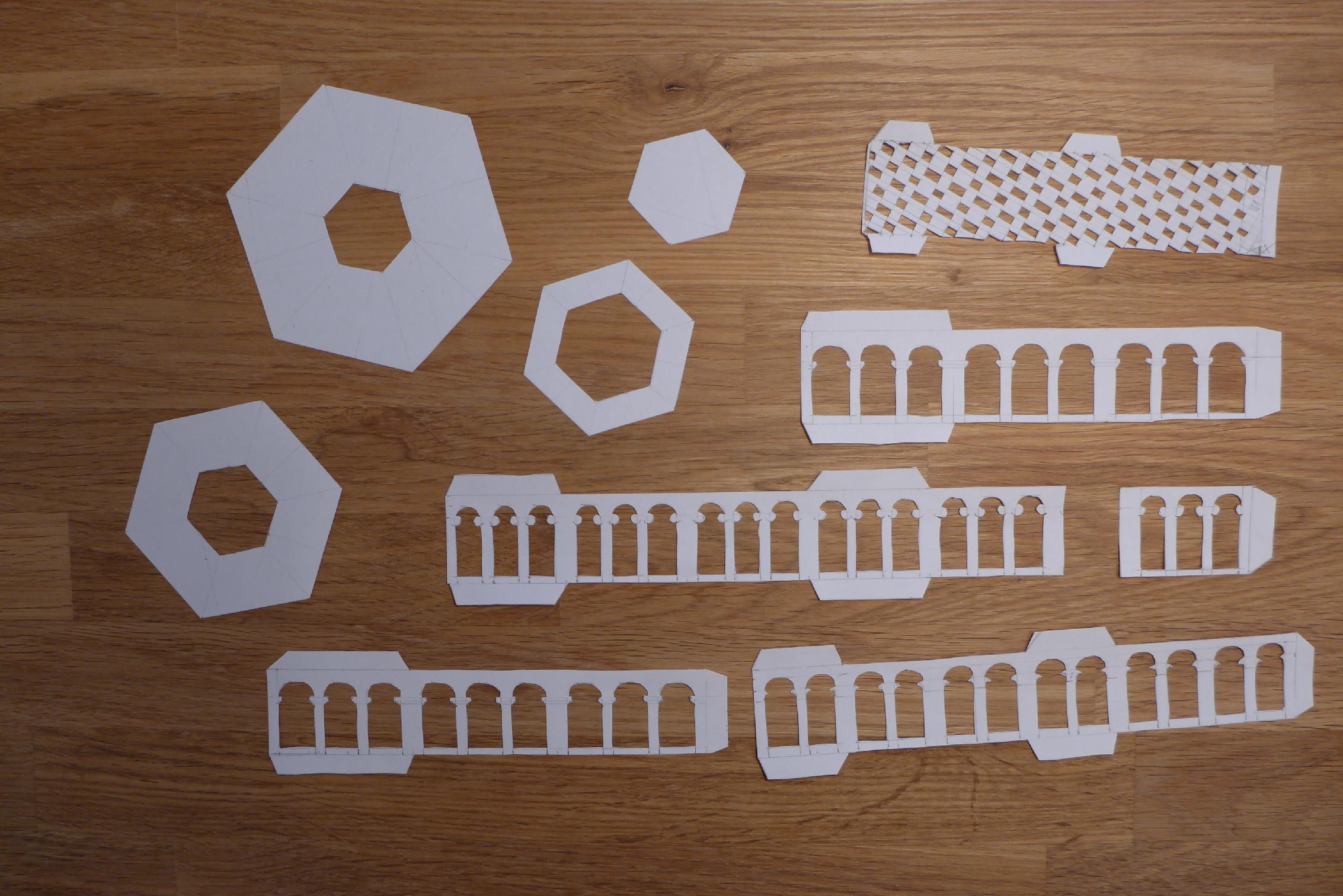
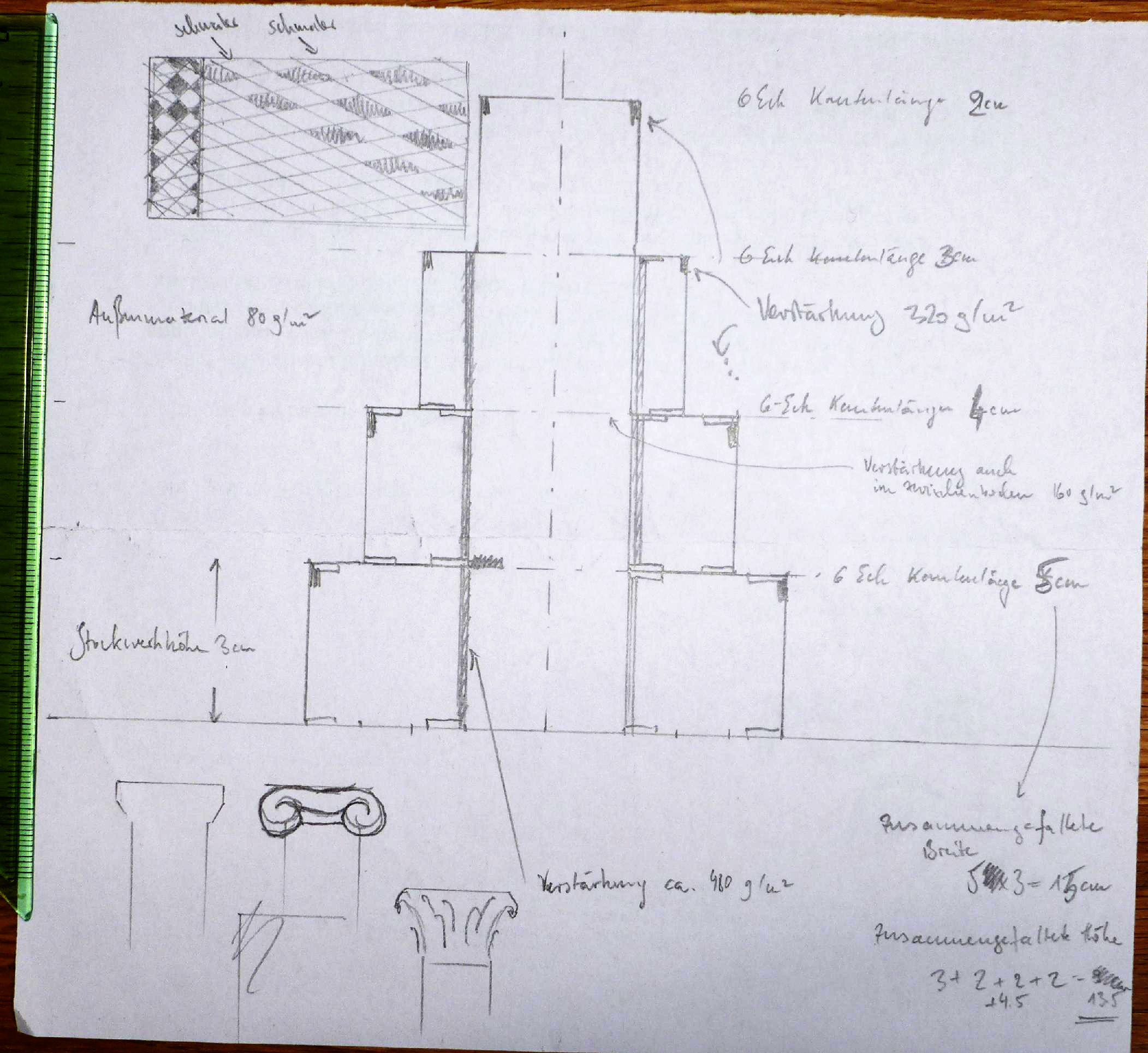
However, in order to be able to open the tower nicely, I found that there is a number of invisible parts necessary. First of all, the walls are stiffened at the location indicated by the arrows in the image below. From the inside, strips of 320 g/sqm paper (160 g/sqm twice) are added. Also the floors are stiffened with two half-hexagons of 160 g/sqm paper.
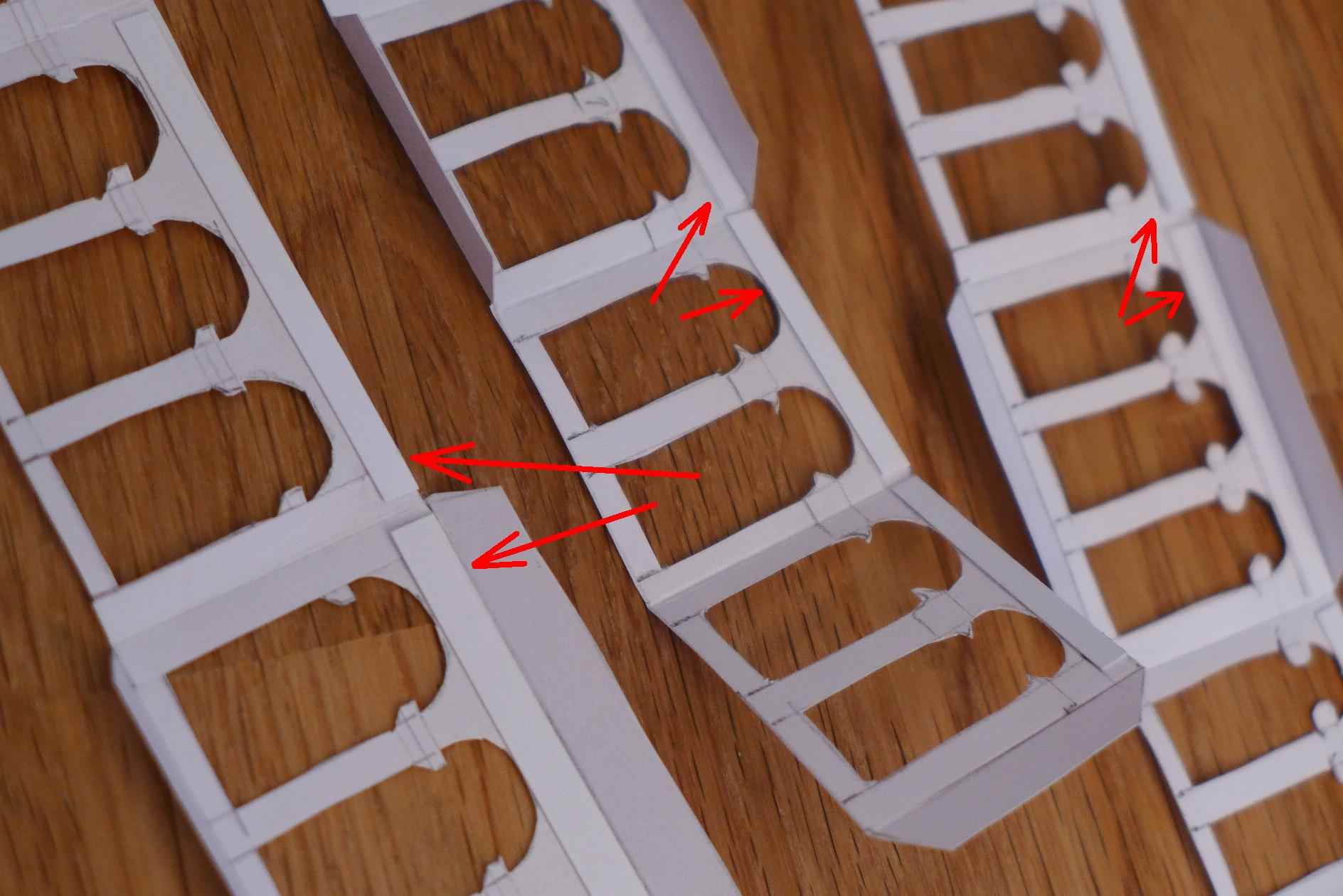
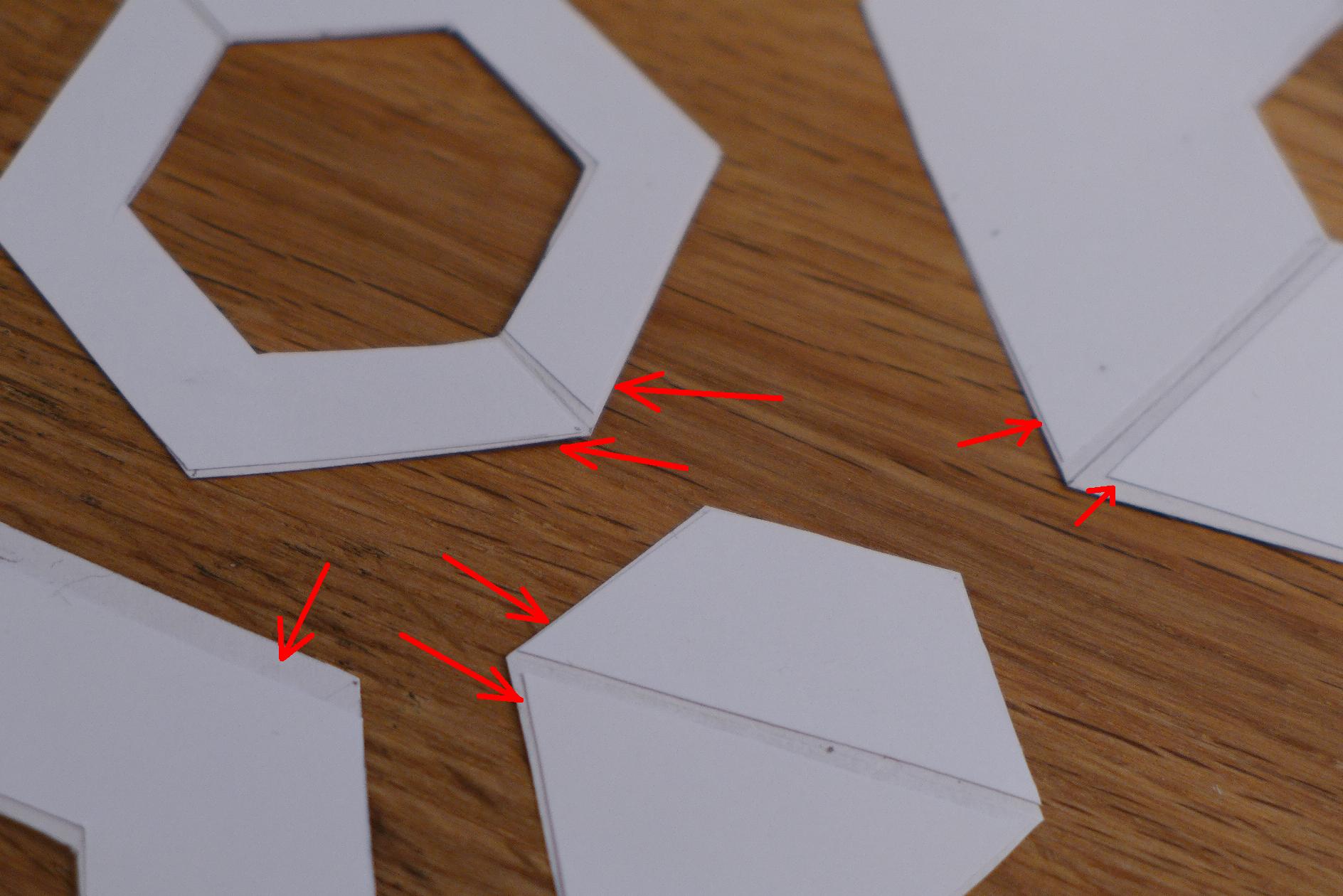
There primary purpose of the inner walls again is to help opening up the tower. They push the floors up. Therefore they are built out of 640 g/sqm paper and have arcs cut in them for decoration. They are attached to the inside of each hexagon. The best location to support the floors would be at the kink. This is not the case here, and this is why the floors had to be stiffened.
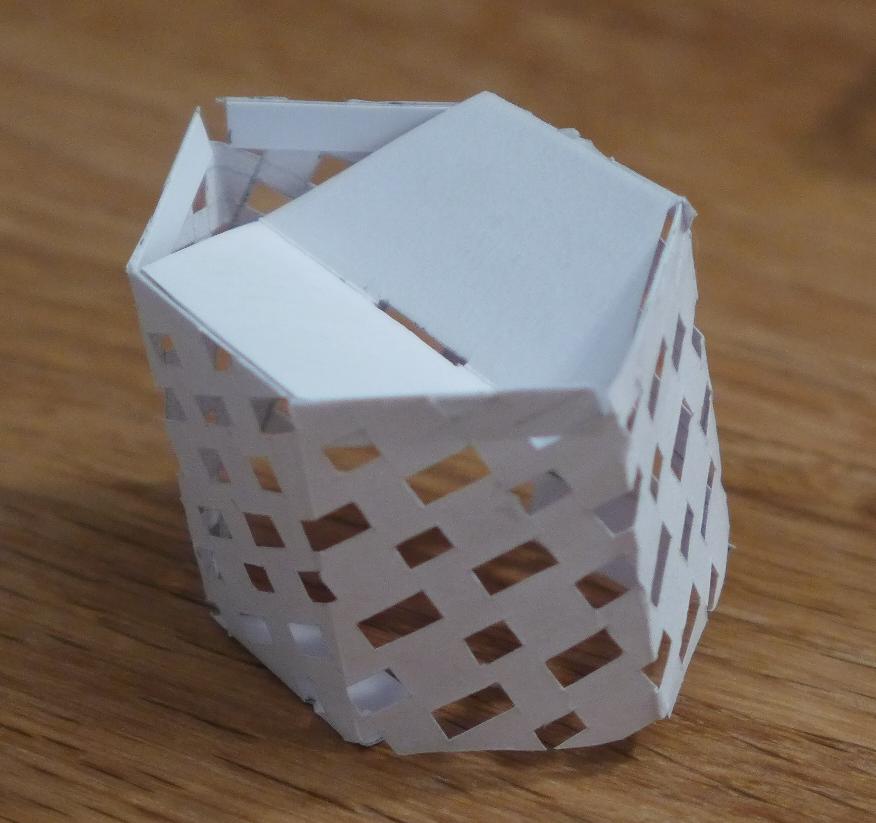

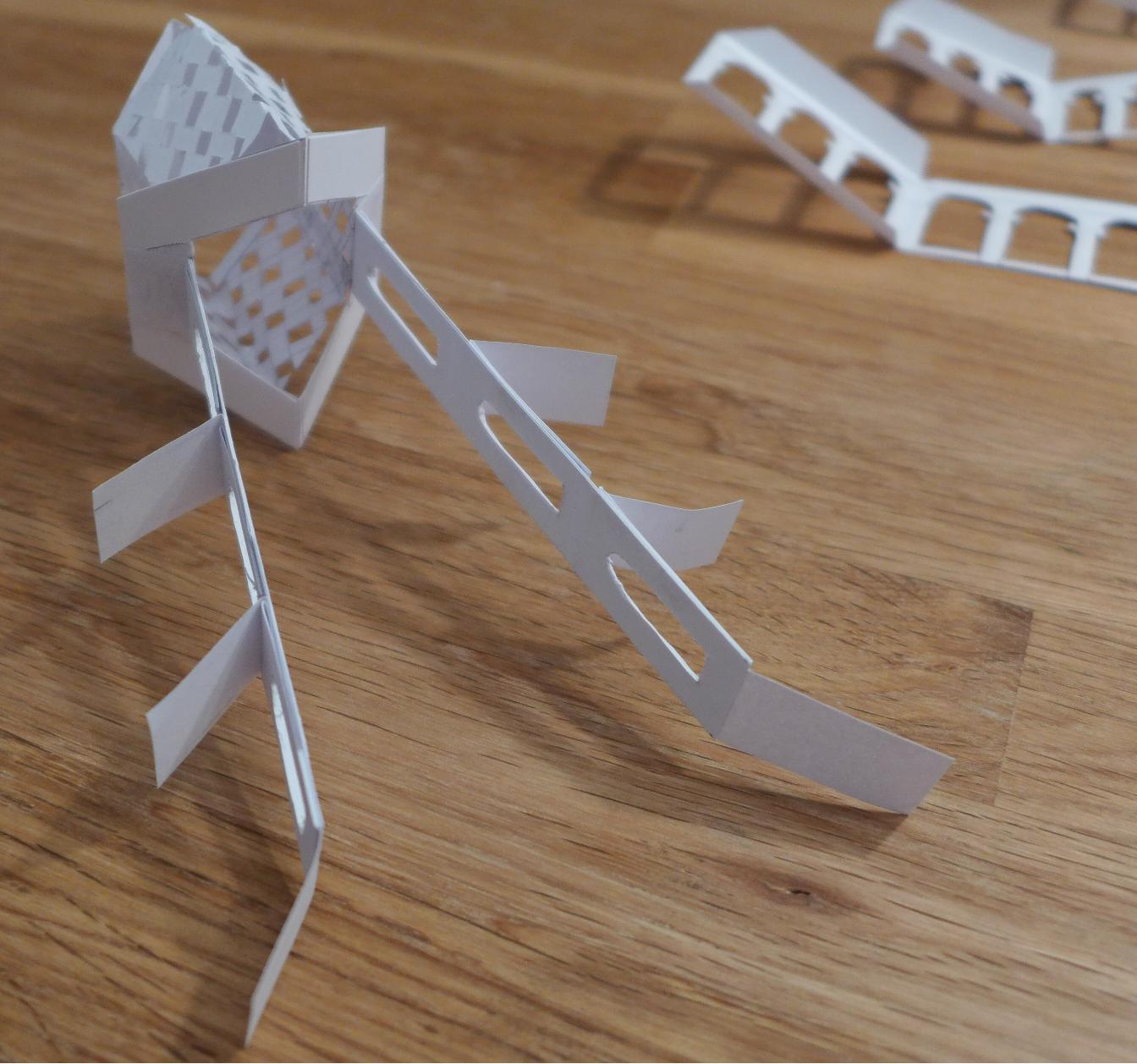
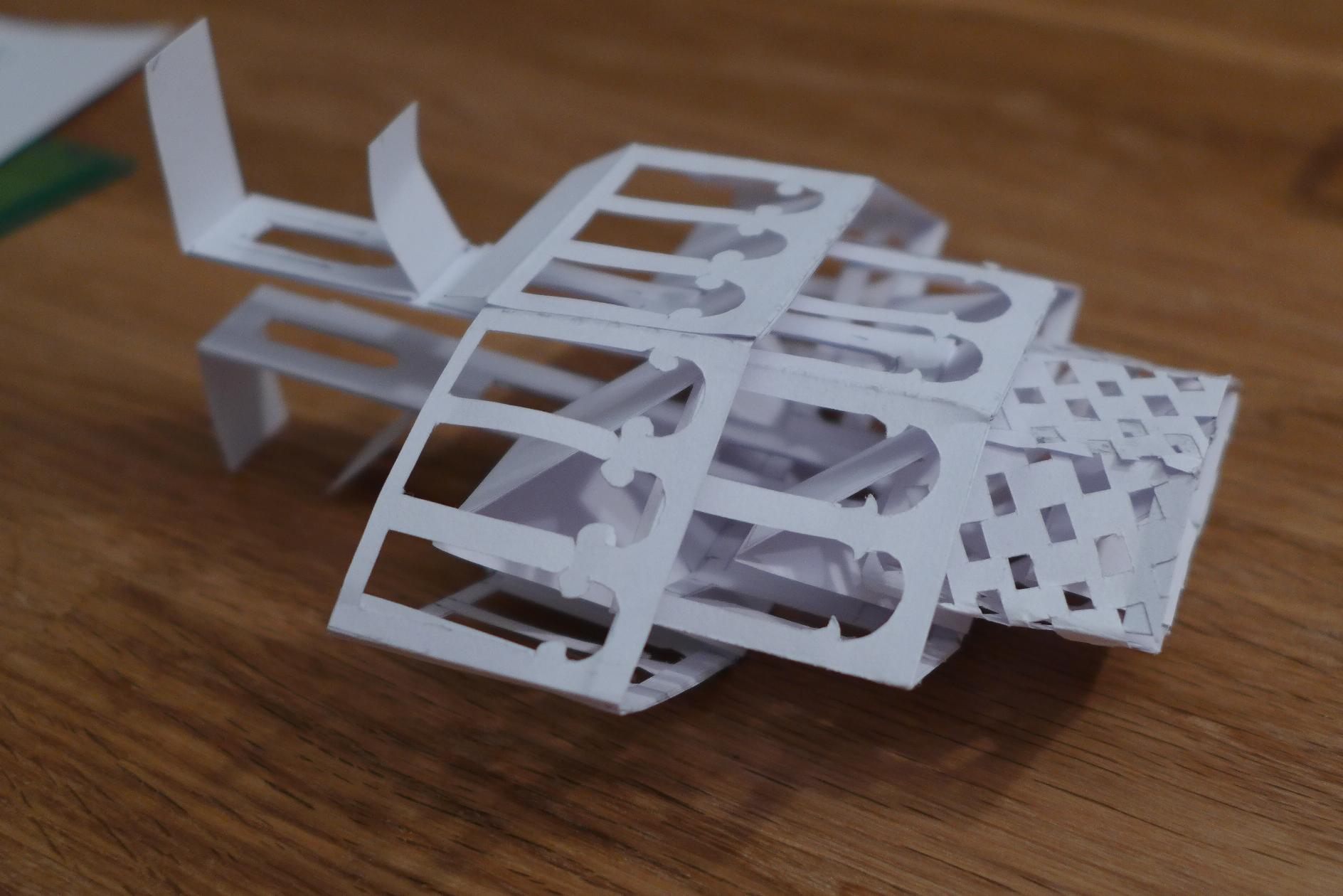
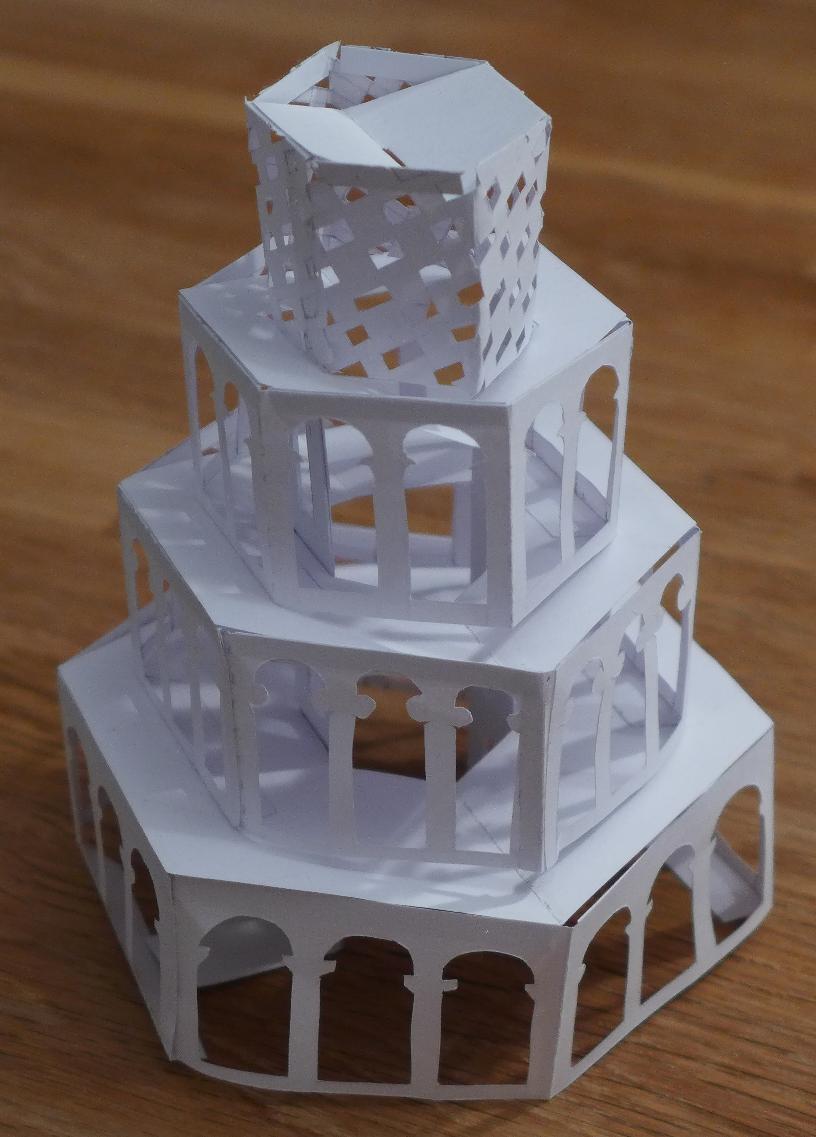
One can nicely see that now all but the topmost floor are supported and become exactly horizontal when the tower is opened. The topmost floor gets an extra support. As its support is as long as the height of the tower, it might easily buckle. In order to prevent this it is given a cross section in the form of a cross (see image below).
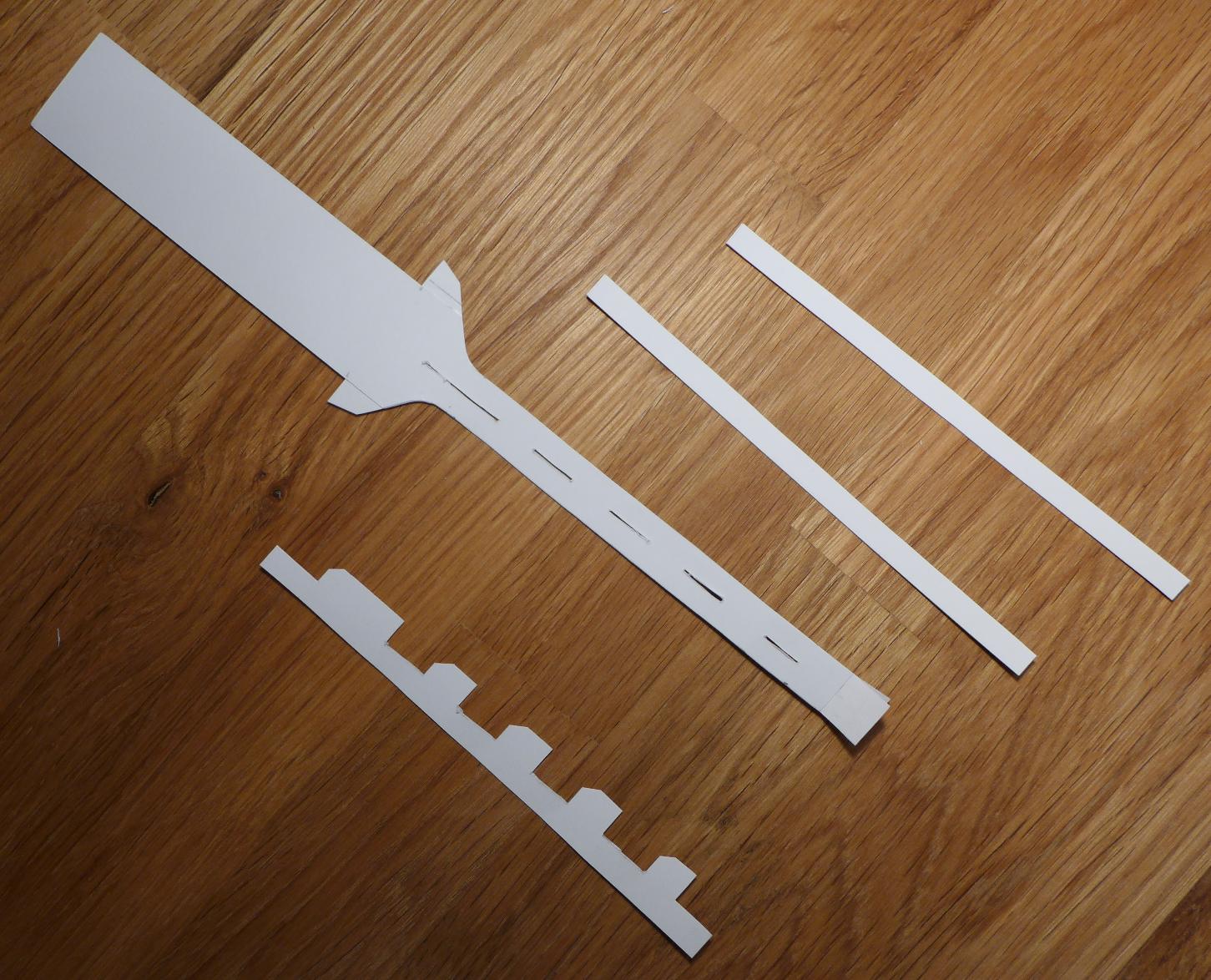
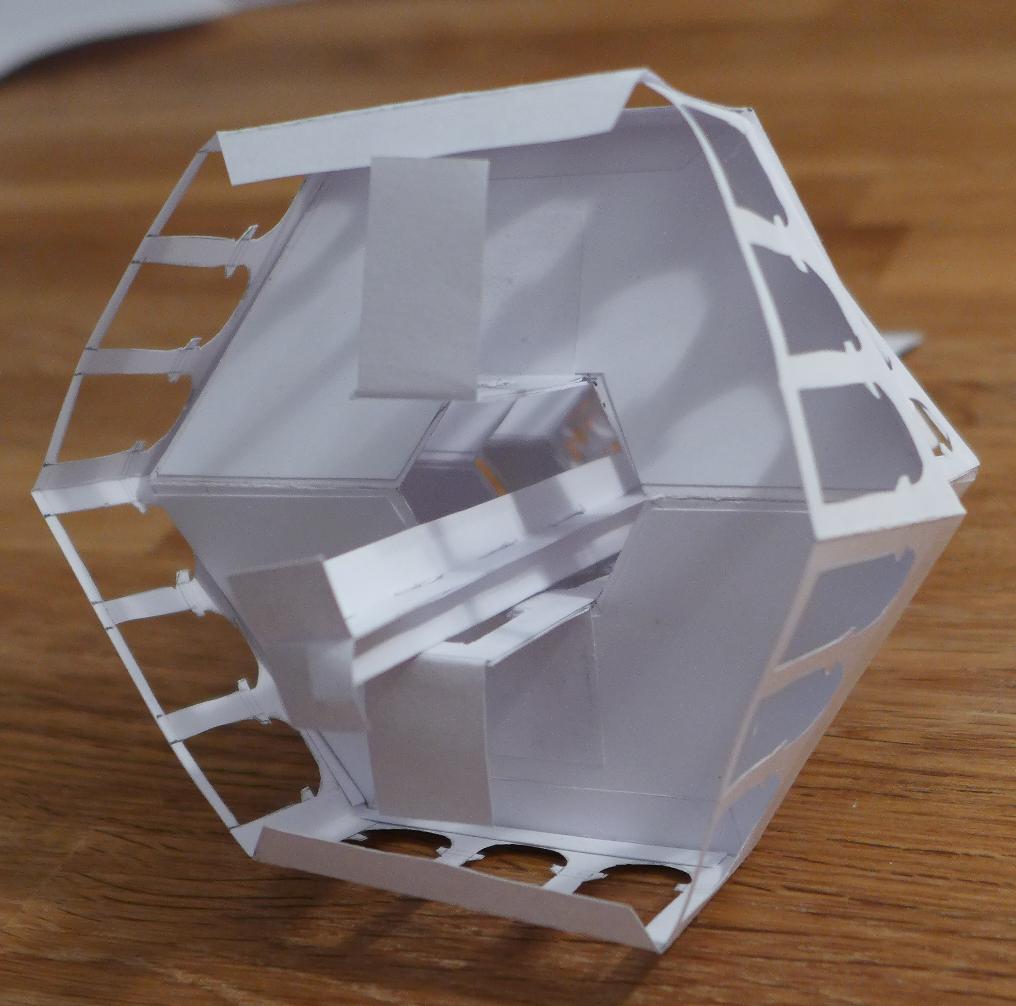
It can be attached under the topmost floor directly and thus mostly remain invisible. Here the support continues further up and serves a decorative purpose. The support of the topmost floor happens through a fork-like structure.
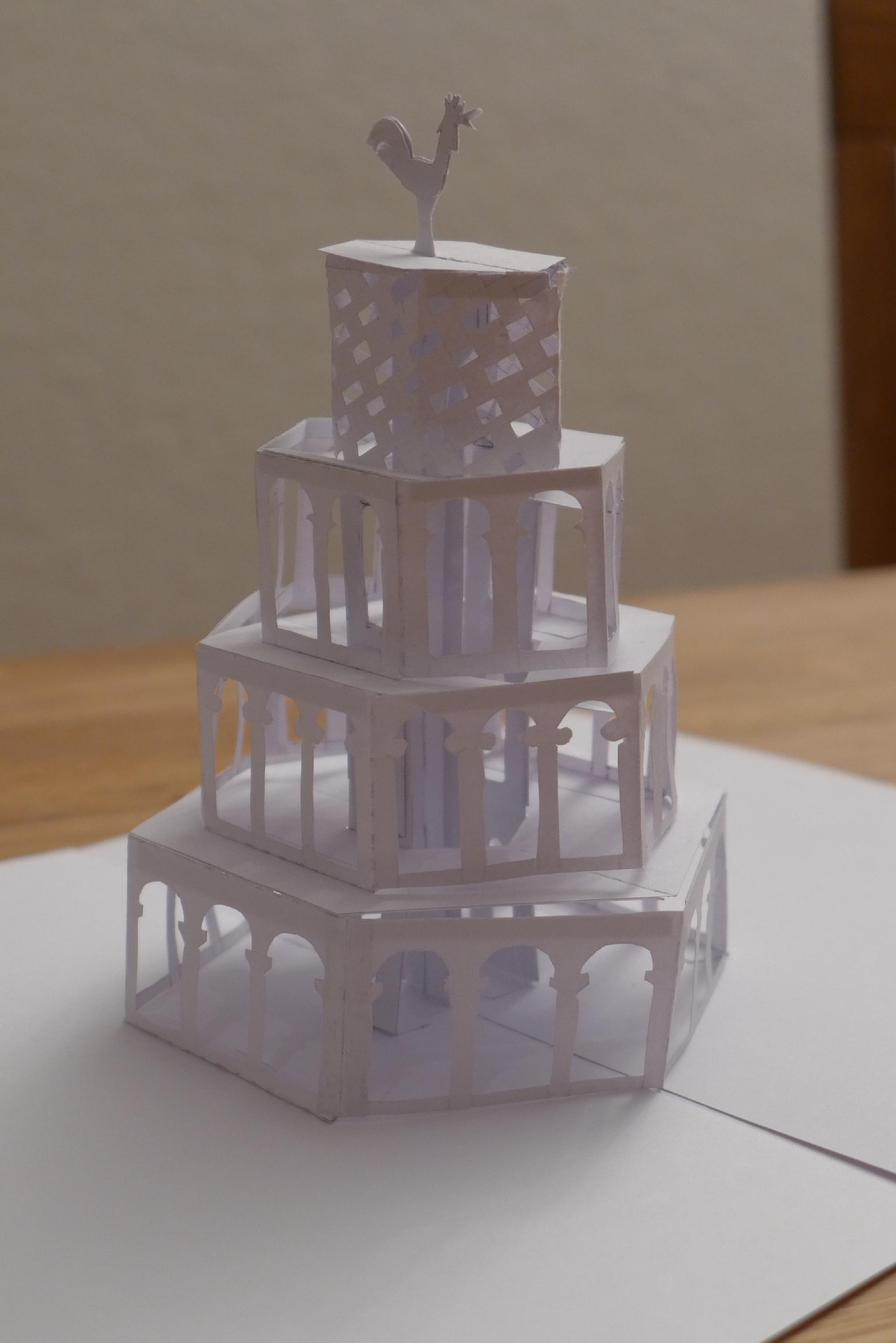
Last modified: Mon Jul 12 18:33:06 CEST 2021